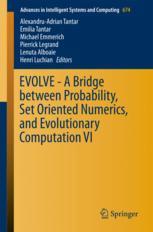

Most ebook files are in PDF format, so you can easily read them using various software such as Foxit Reader or directly on the Google Chrome browser.
Some ebook files are released by publishers in other formats such as .awz, .mobi, .epub, .fb2, etc. You may need to install specific software to read these formats on mobile/PC, such as Calibre.
Please read the tutorial at this link: https://ebookbell.com/faq
We offer FREE conversion to the popular formats you request; however, this may take some time. Therefore, right after payment, please email us, and we will try to provide the service as quickly as possible.
For some exceptional file formats or broken links (if any), please refrain from opening any disputes. Instead, email us first, and we will try to assist within a maximum of 6 hours.
EbookBell Team

4.0
6 reviewsThis book comprises selected research papers from the 2015 edition of the EVOLVE conference, which was held on June 18–June 24, 2015 in Iași, Romania. It presents the latest research on Probability, Set Oriented Numerics, and Evolutionary Computation. The aim of the EVOLVE conference was to provide a bridge between probability, set oriented numerics and evolutionary computation and to bring together experts from these disciplines. The broad focus of the EVOLVE conference made it possible to discuss the connection between these related fields of study computational science. The selected papers published in the proceedings book were peer reviewed by an international committee of reviewers (at least three reviews per paper) and were revised and enhanced by the authors after the conference. The contributions are categorized into five major parts, which are:
Multicriteria and Set-Oriented Optimization; Evolution in ICT Security; Computational Game Theory; Theory on Evolutionary Computation; Applications of Evolutionary Algorithms.
The 2015 edition shows a major progress in the aim to bring disciplines together and the research on a number of topics that have been discussed in previous editions of the conference matured over time and methods have found their ways in applications. In this sense the book can be considered an important milestone in bridging and thereby advancing state-of-the-art computational methods.